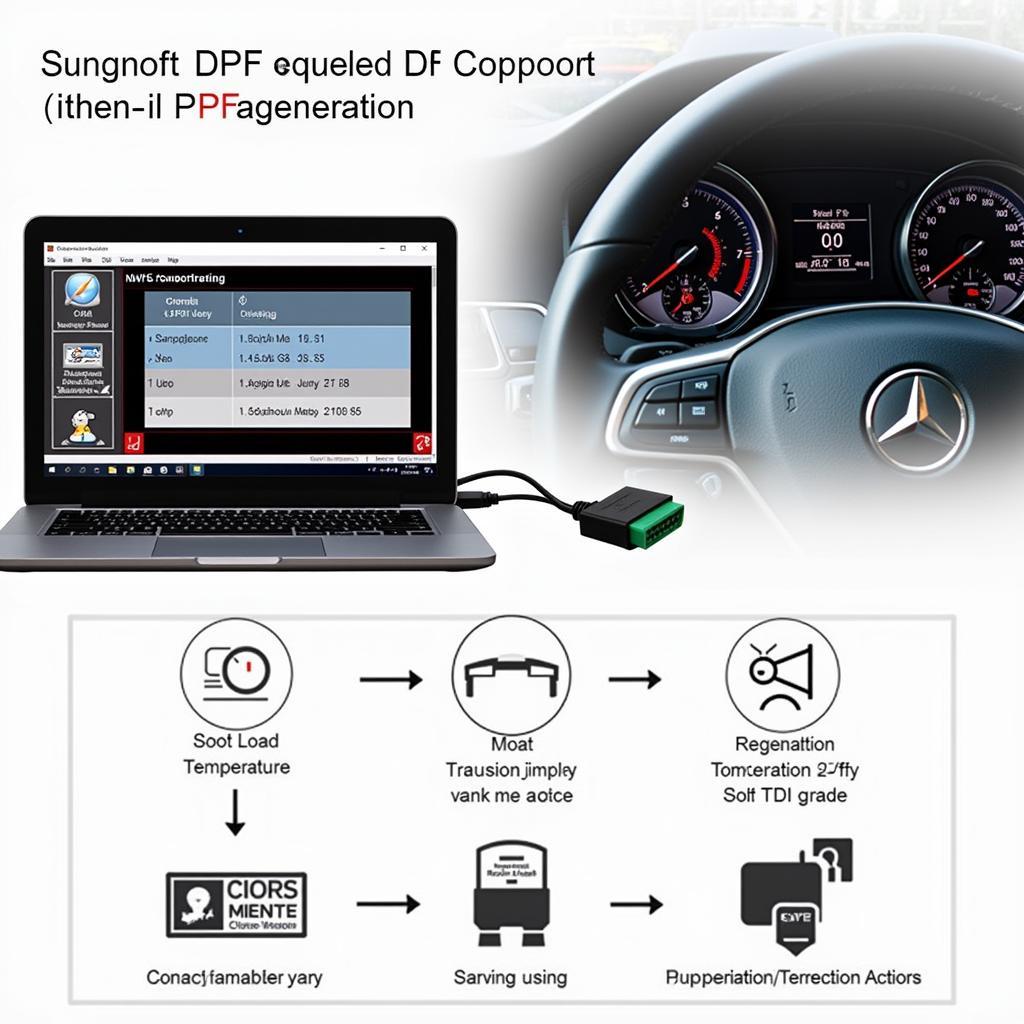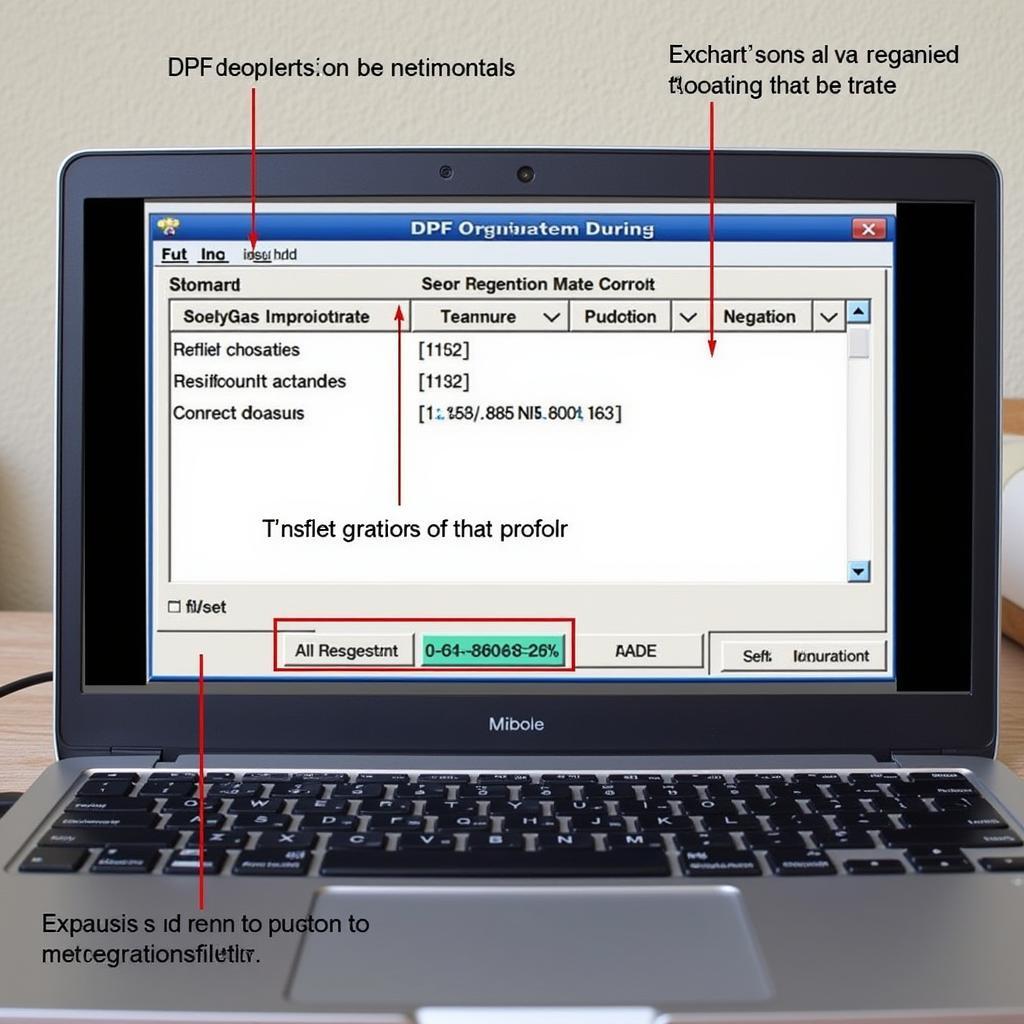Your cart is currently empty!

VCDS DPF Regeneration: The 1.6 TDI Owner’s Guide
Performing a VCDS DPF regeneration on your 1.6 TDI engine can seem daunting, but with the right knowledge, it’s a manageable process. This guide will walk you through everything you need to know about VCDS DPF regeneration for the 1.6 TDI, from understanding why it’s necessary to troubleshooting common issues.
Understanding DPF Regeneration in 1.6 TDI Engines
Diesel Particulate Filters (DPFs) are essential components in modern diesel vehicles like the 1.6 TDI. They trap harmful soot particles from the exhaust gases, preventing them from being released into the atmosphere. However, the DPF can become clogged over time, requiring a regeneration process to burn off the accumulated soot. This process involves increasing the exhaust gas temperature to burn the soot into ash.
Types of DPF Regeneration
There are two main types of DPF regeneration: passive and active. Passive regeneration occurs automatically during highway driving when exhaust gas temperatures are naturally high. Active regeneration is initiated by the engine control unit (ECU) when passive regeneration isn’t sufficient. This involves injecting extra fuel into the exhaust system to raise the temperature and burn off the soot. Sometimes, an active regeneration needs a little help, and that’s where VCDS comes in.
 VCDS DPF Regeneration Process on a 1.6 TDI Engine
VCDS DPF Regeneration Process on a 1.6 TDI Engine
Why VCDS for DPF Regeneration?
VCDS (Vag-Com Diagnostic System) is a powerful diagnostic tool that allows you to access and control various functions of your 1.6 TDI engine, including initiating a forced DPF regeneration. This can be particularly useful when a car experiences frequent short journeys, preventing passive regeneration and leading to premature DPF clogging. VCDS allows you to perform a controlled regeneration, even when driving conditions aren’t ideal.
Performing a VCDS DPF Regeneration on a 1.6 TDI
Before starting a forced regeneration, ensure your 1.6 TDI has at least a quarter tank of fuel and the engine oil level is correct. Park the vehicle in a well-ventilated area, as the regeneration process can produce some smoke.
- Connect the VCDS cable to the OBD-II port of your 1.6 TDI and launch the VCDS software on your laptop.
- Select “Select Control Module.”
- Choose “Engine.”
- Go to “Basic Settings.”
- Select “Regeneration.”
- Follow the on-screen prompts to initiate the regeneration process. The process typically takes 20-30 minutes.
 VCDS Software Interface During DPF Regeneration
VCDS Software Interface During DPF Regeneration
Troubleshooting Common VCDS DPF Regeneration Issues
Sometimes, the regeneration process might not start or complete successfully. Here are a few common issues and how to address them:
- Low Fuel Level: Ensure the fuel tank is at least a quarter full before initiating the process.
- Fault Codes: Check for any fault codes related to the DPF system and address them before attempting regeneration.
- Interrupted Regeneration: Avoid interrupting the process once it has started. A disrupted regeneration can lead to further issues.
“Regular DPF regeneration is crucial for maintaining the health of your 1.6 TDI engine,” says John Miller, a certified automotive technician with over 20 years of experience specializing in diesel engine diagnostics. “VCDS offers a controlled and efficient way to manage this process, especially for vehicles used primarily for short trips.”
Maintaining Your 1.6 TDI DPF
Regular maintenance and driving habits can help prevent excessive DPF clogging:
- Use the correct engine oil: Use only low-ash oil specifically designed for vehicles with DPFs.
- Avoid short trips: Occasionally take your 1.6 TDI for longer drives at highway speeds to allow for passive regeneration.
- Regular checks: Periodically check the DPF soot load using VCDS to monitor its condition.
“Using the correct engine oil is often overlooked, but it’s absolutely vital for DPF longevity,” adds John Miller. “The wrong oil can accelerate DPF clogging, leading to costly repairs.”
In conclusion, understanding and performing VCDS DPF regeneration on your 1.6 TDI engine is crucial for maintaining its performance and longevity. By following the steps outlined in this guide and incorporating good driving habits, you can ensure your DPF remains in optimal condition. For further assistance or specialized VCDS support, feel free to contact us at vcdstool at +1 (641) 206-8880 and our email address: vcdstool@gmail.com. Our office is located at 6719 W 70th Ave, Arvada, CO 80003, USA.
FAQ
- How often should I perform a VCDS DPF regeneration on my 1.6 TDI?
- What are the signs of a blocked DPF?
- Can I perform a VCDS DPF regeneration while driving?
- Is VCDS safe to use on my 1.6 TDI?
- What are the alternatives to VCDS for DPF regeneration?
- How much does a DPF replacement cost for a 1.6 TDI?
- What should I do if the VCDS DPF regeneration fails?
by
Tags:
Leave a Reply